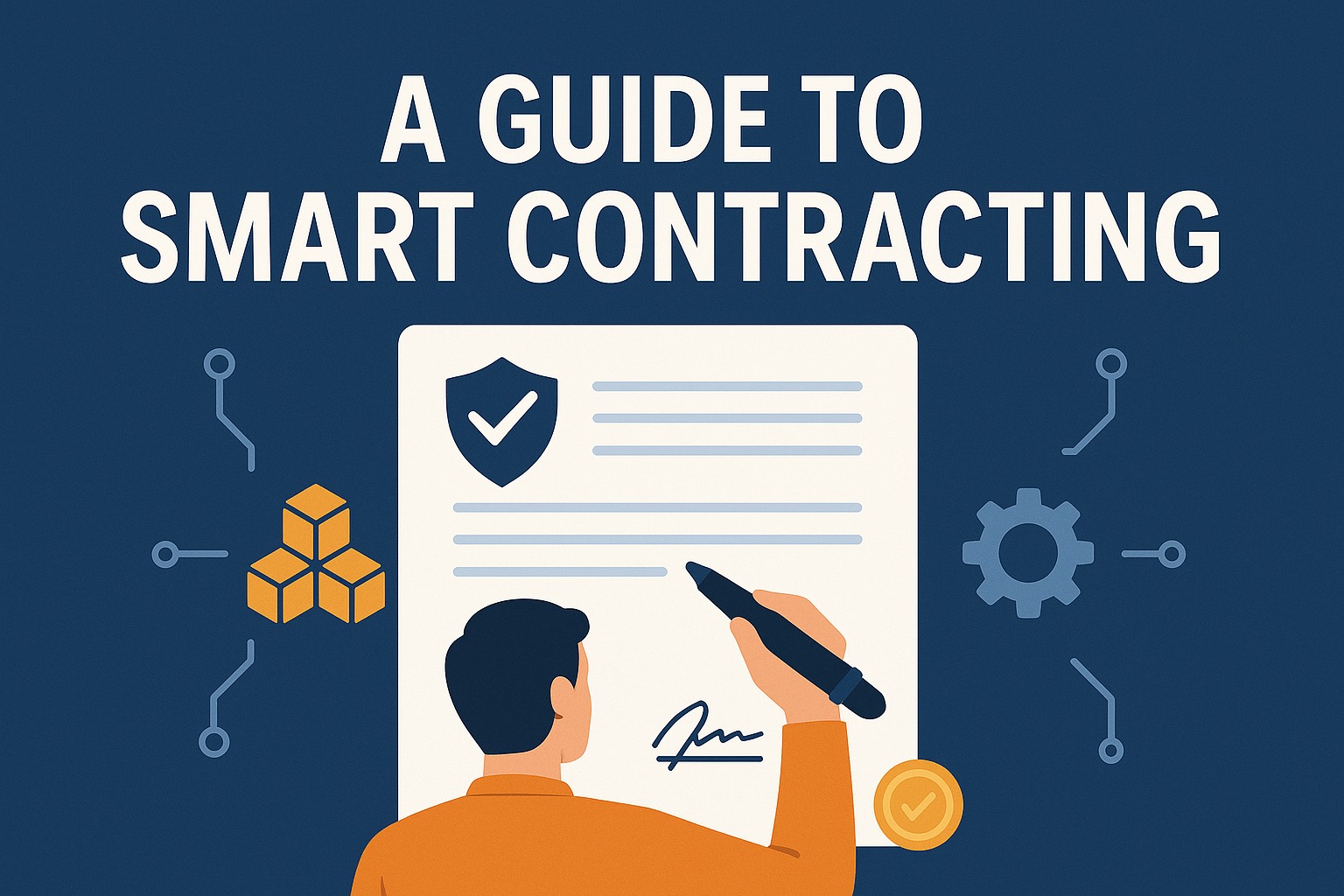Smart contracting is the use of blockchain-based agreements that execute automatically when conditions are met. Unlike traditional contracts, which require lawyers, banks, or middlemen, smart contracts use code to enforce terms. This makes them faster, more transparent, and harder to manipulate. With billions lost to scams in 2024, understanding smart contracting is crucial for safe participation.
How Smart Contracting Works
A smart contract is a self-executing program stored on a blockchain. It operates on an if-then structure:
- If conditions are met → then the contract executes.
- If conditions aren’t met → then nothing happens.
For example:
- If a buyer sends payment → then the seller’s digital asset transfers automatically.
Because the code is transparent and runs on decentralized infrastructure, no single party can alter it once deployed. This immutability makes smart contracting trustworthy, but also risky if the contract has coding flaws.
Smart Contract Types: A Comprehensive Guide provides more details on the different categories of contracts and how they’re used in areas like DAOs and NFTs.
Benefits of Smart Contracting
- Efficiency: No lawyers or banks required → faster transactions.
- Transparency: Code is visible to everyone on the blockchain.
- Security: Contracts can’t be altered once deployed.
- Cost savings: Cuts out middlemen, reducing fees.
These benefits have driven adoption across industries like real estate, supply chain, and digital identity management.
Risks and Misconceptions
While smart contracting is powerful, there are common misconceptions:
- Misconception 1: Smart contracts are always safe.
Reality: Poorly written code can still be hacked. In 2024 alone, $9.9 billion was lost to blockchain scams.
- Misconception 2: Smart contracts replace lawyers entirely.
Reality: They automate execution, but legal interpretation still matters.
- Misconception 3: Smart contracts can be edited.
Reality: Once deployed, contracts are permanent, unless designed with upgrade mechanisms.
Real-World Applications of Smart Contracting
Smart contracting already powers:
- Finance (DeFi): Automated lending, borrowing, and trading.
- NFTs: Enforcing royalty payments automatically.
- Supply Chain: Tracking goods from origin to shelf.
- Voting (DAOs): Transparent, tamper-proof governance.
Case Study: DeFi Lending
Platforms like Aave and Compound use smart contracts to let users lend and borrow funds without banks. Interest rates adjust algorithmically, and liquidations are automatic. However, bugs in code have previously led to millions in losses, highlighting the importance of audits.
Case Study: NFT Royalties
Artists can earn royalties on every resale of their digital art through embedded smart contracts. This ensures fair compensation and creates new revenue streams for creators.
These use cases highlight why smart contracting is seen as the backbone of Web3 infrastructure.
For a visual breakdown of how contracts are identified and verified, explore Hindsight’s Visual Explorer Playbook.
Security in Smart Contracting
Security is the greatest challenge in smart contracting. Common vulnerabilities include:
- Reentrancy attacks
- Logic flaws in coding
- Exploitable upgrade functions
Mitigation strategies:
- Regular audits
- Using trusted libraries
- Visual verification tools like Hindsight’s Shape Mode™ to identify contract addresses safely.
According to a World Economic Forum, scaling safe smart contracting will require both technical and educational infrastructure.
Misconceptions About Smart Contracting
Beyond technical risks, public perception also carries misconceptions:
- “They’re too complex.” In reality, visual interfaces like Shape Mode™ simplify smart contract recognition.
- “They’re only for crypto.” Smart contracting is being explored in law, healthcare, and logistics.
- “They guarantee fairness.” Code enforces rules but can’t guarantee ethical intent, humans must still design fair systems.
Future of Smart Contracting
Smart contracting is still in its early stages, but trends suggest massive growth:
- Legal Recognition: Countries like the U.S., Singapore, and Switzerland are exploring frameworks for legally binding smart contracts.
- Enterprise Adoption: Multinationals are piloting blockchain-based agreements in trade and finance.
- Interoperability: Contracts will increasingly work across multiple blockchains.
Beyond the Basics: Advanced Smart Contracting
Advanced forms of smart contracting include multi-signature agreements, contract composability, and governance frameworks. These enable entire ecosystems of applications to interact seamlessly.
For developers and enterprises, advanced tools like Hindsight’s Visual Trust Infrastructure make it easier to see, understand, and safely interact with contracts at scale.
Press Perspective: Why the World Is Watching
Industry experts highlight the shift:
- According to CoinDesk, “Smart contracts represent not just code, but a rethinking of trust in digital transactions.” (source)
- Forbes reports that enterprise adoption of smart contracting could “transform industries by cutting inefficiencies and building trust at scale” (source).
These external perspectives validate why education and infrastructure, like Hindsight VIP, are essential.
Conclusion: Why Smart Contracting Matters
Smart contracting is not just a technical feature, it’s a trust infrastructure for the digital economy. It allows strangers to transact securely without needing intermediaries. But safe adoption requires education, visual tools, and clear practices.
